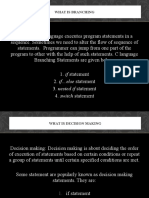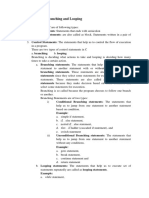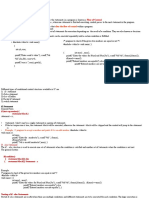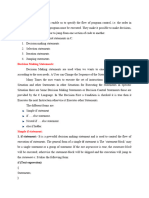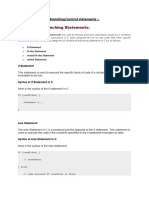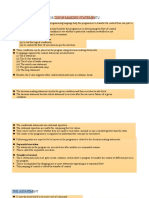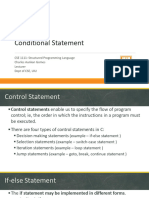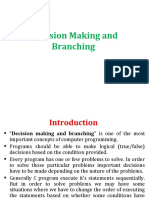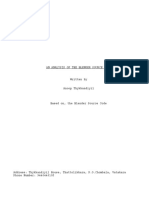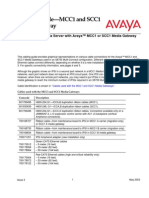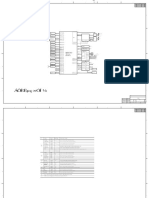0% found this document useful (0 votes)
8 views10 pagesBranching in C Language
The document explains decision-making or branching in C language, detailing how branching alters the flow of program execution through conditional and unconditional statements. It covers various types of conditional branching, including if, if-else, nested if, if-else ladder, and switch-case statements, along with their syntax and flow charts. Additionally, it discusses the unconditional branching using the goto statement, highlighting its discouraged use due to potential complications in program readability.
Uploaded by
jajaakash95Copyright
© © All Rights Reserved
We take content rights seriously. If you suspect this is your content, claim it here.
Available Formats
Download as PDF, TXT or read online on Scribd
0% found this document useful (0 votes)
8 views10 pagesBranching in C Language
The document explains decision-making or branching in C language, detailing how branching alters the flow of program execution through conditional and unconditional statements. It covers various types of conditional branching, including if, if-else, nested if, if-else ladder, and switch-case statements, along with their syntax and flow charts. Additionally, it discusses the unconditional branching using the goto statement, highlighting its discouraged use due to potential complications in program readability.
Uploaded by
jajaakash95Copyright
© © All Rights Reserved
We take content rights seriously. If you suspect this is your content, claim it here.
Available Formats
Download as PDF, TXT or read online on Scribd
/ 10
























